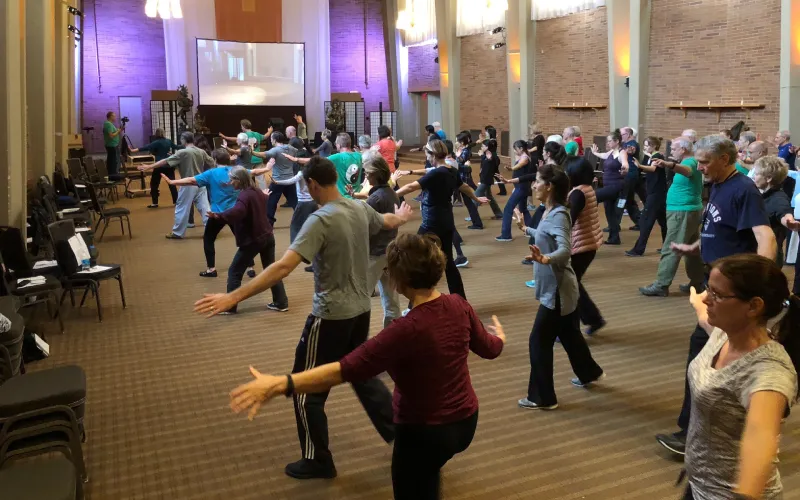
Reduce Opioid Dependence in Chronic Pain Patients with Mindfulness
By John M. de Castro, Ph.D.
“meditation involves endogenous opioid pathways, mediating its analgesic effect and growing resilient with increasing practice to external suggestion.” – Haggai Sharon
Substance abuse is a major health and social problem. There are estimated 22.2 million people in the U.S. with substance dependence. It is estimated that worldwide there are nearly ¼ million deaths yearly as a result of illicit drug use. Obviously, there is a need to find effective methods to prevent and treat substance abuse. There are a number of programs that are successful at stopping the drug abuse, including the classic 12-step program emblematic of Alcoholics Anonymous. Unfortunately, the majority of drug and/or alcohol abusers’ relapse and return to substance abuse.
Hence, it is important to find an effective method to treat substance abuse and prevent relapse, but an effective treatment has been elusive. Most programs and therapies to treat addictions have poor success rates. Recently, mindfulness training has been found to be effective in treating addictions and preventing relapses. Mindfulness-Oriented Recovery Enhancement (MORE) was developed to treat patients with opioid addictions. It involves mindful breathing and body scan meditations, cognitive reappraisal to decrease negative emotions and craving, and savoring to augment natural reward processing and positive emotion.
In today’s Research News article “Mindfulness-Oriented Recovery Enhancement vs Supportive Group Therapy for Co-occurring Opioid Misuse and Chronic Pain in Primary Care: A Randomized Clinical Trial.” (See summary below or view the full text of the study at: https://www.ncbi.nlm.nih.gov/pmc/articles/PMC8886485/ ) Garland and colleagues recruited chronic pain patients being treated with opioid drugs who were misusing opioids. They were randomly assigned to receive 8 weekly 2-hour sessions of Mindfulness-Oriented Recovery Enhancement (MORE) or supportive psychotherapy. They were measured before and after treatment and 3, 6, and 9 months later for chronic pain, opioid misuse, daily opioid dose, opioid craving, anxiety, depression, perceived stress, and adverse events.
They found that at the 9 month follow up 45% of the Mindfulness-Oriented Recovery Enhancement (MORE) were no longer misusing opioids while only 24% of the supportive psychotherapy were no longer misusing. The MORE group also had significantly greater reductions in pain severity, opioid dosage, depression, and pain-related functional interference.
The finding support the ability of Mindfulness-Oriented Recovery Enhancement (MORE) to improve opioid misuse and improve the psychological well-being of chronic pain patients.
“That is not because pain is psychological. It’s because all pain is processed in the brain and mindfulness changes how the brain processes the signals of damage from the body,” – Eric Garland
CMCS – Center for Mindfulness and Contemplative Studies
This and other Contemplative Studies posts are also available on Twitter @MindfulResearch
Study Summary
Garland, E. L., Hanley, A. W., Nakamura, Y., Barrett, J. W., Baker, A. K., Reese, S. E., Riquino, M. R., Froeliger, B., & Donaldson, G. W. (2022). Mindfulness-Oriented Recovery Enhancement vs Supportive Group Therapy for Co-occurring Opioid Misuse and Chronic Pain in Primary Care: A Randomized Clinical Trial. JAMA internal medicine, 182(4), 407–417. https://doi.org/10.1001/jamainternmed.2022.0033
Key Points
Question
Does a mindfulness-based intervention reduce comorbid chronic pain and opioid misuse in the primary care setting more than supportive psychotherapy?
Findings
In this randomized clinical trial that included 250 adults with both chronic pain and opioid misuse, 45.0% of participants receiving Mindfulness-Oriented Recovery Enhancement (MORE) were no longer misusing opioids after 9 months of follow-up compared with 24.4% of participants receiving supportive group psychotherapy. Participants receiving MORE also reported significant improvements in chronic pain symptoms compared with those receiving supportive psychotherapy.
Meaning
In this study, MORE appeared to be an efficacious treatment for opioid misuse among adults with chronic pain.
Go to:
Abstract
Importance
Successful treatment of opioid misuse among people with chronic pain has proven elusive. Guidelines recommend nonopioid therapies, but the efficacy of mindfulness-based interventions for opioid misuse is uncertain.
Objective
To evaluate the efficacy of Mindfulness-Oriented Recovery Enhancement (MORE) for the reduction of opioid misuse and chronic pain.
Design, Setting, and Participants
This interviewer-blinded randomized clinical trial enrolled patients from primary care clinics in Utah between January 4, 2016, and January 16, 2020. The study included 250 adults with chronic pain receiving long-term opioid therapy who were misusing opioid medications.
Interventions
Treatment with MORE (comprising training in mindfulness, reappraisal, and savoring positive experiences) or supportive group psychotherapy (control condition) across 8 weekly 2-hour group sessions.
Main Outcomes and Measures
Primary outcomes were (1) opioid misuse assessed by the Drug Misuse Index (self-report, interview, and urine screen) and (2) pain severity and pain-related functional interference, assessed by subscale scores on the Brief Pain Inventory through 9 months of follow-up. Secondary outcomes were opioid dose, emotional distress, and ecological momentary assessments of opioid craving. The minimum intervention dose was defined as 4 or more completed sessions of MORE or supportive group psychotherapy.
Results
Among 250 participants (159 women [63.6%]; mean [SD] age, 51.8 [11.9] years), 129 were randomized to the MORE group and 121 to the supportive psychotherapy group. Overall, 17 participants (6.8%) were Hispanic or Latino, 218 (87.2%) were White, and 15 (6.0%) were of other races and/or ethnicities (2 American Indian, 3 Asian, 1 Black, 2 Pacific Islander, and 7 did not specify). At baseline, the mean duration of pain was 14.7 years (range, 1-60 years), and the mean (SD) morphine-equivalent opioid dose was 101.0 (266.3) mg (IQR, 16.0-90.0 mg). A total of 203 participants (81.2%) received the minimum intervention dose (mean [SD], 5.7 [2.2] sessions); at 9 months, 92 of 250 participants (36.8%) discontinued the study. The overall odds ratio for reduction in opioid misuse through the 9-month follow-up period in the MORE group compared with the supportive psychotherapy group was 2.06 (95% CI, 1.17-3.61; P = .01). At 9 months, 36 of 80 participants (45.0%) in the MORE group were no longer misusing opioids compared with 19 of 78 participants (24.4%) in the supportive psychotherapy group. Mixed models demonstrated that MORE was superior to supportive psychotherapy through 9 months of follow-up for pain severity (between-group effect: 0.49; 95% CI, 0.17-0.81; P = .003) and pain-related functional interference (between-group effect: 1.07; 95% CI, 0.64-1.50; P < .001). Participants in the MORE group reduced their opioid dose to a greater extent than those in the supportive psychotherapy group. The MORE group also had lower emotional distress and opioid craving.
Conclusions and Relevance
In this randomized clinical trial, among adult participants in a primary care setting, the MORE intervention led to sustained improvements in opioid misuse and chronic pain symptoms and reductions in opioid dosing, emotional distress, and opioid craving compared with supportive group psychotherapy. Despite attrition caused by the COVID-19 pandemic and the vulnerability of the sample, MORE appeared to be efficacious for reducing opioid misuse among adults with chronic pain.


 Mindfulness Meditation Reduces Pain.
Mindfulness Meditation Reduces Pain.





